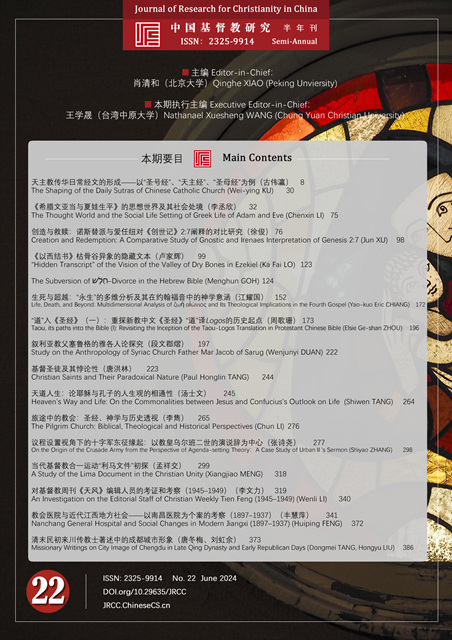Abstract
This article attempts to appropriate James C. Scott’s “hidden transcript theory” to explore the possible “hidden transcript” of the vision of the Valley of Dry Bones in Ezekiel. The author of Ezekiel seems to deliberately made use of ambiguous vocabularies, subverted the concept of irreversible curses in the ancient Near Eastern culture and the myth of the Babylonian Empire so as to criticize its imperial ideology. Therefore, the vision of the Valley of Dry Bones not only provides hope and new imagination for the people in exile, but also a “hidden transcript” that resists the ideology of the Babylonian Empire and denies its imperial theology of status quo. The discovery of this article allows us to see the legitimacy of Casey A. Strine’s appropriation of the “hidden transcript theory” to read Ezekiel. In the discussion about whether חַיִל in the Masoretic Text or συναγωγή in the Septuagint is closer to the original manuscript (Vorlage), the “hidden transcript theory” seems to be able to provide a more reasonable explanation.

This work is licensed under a Creative Commons Attribution-NonCommercial-NoDerivatives 4.0 International License.
Copyright (c) 2024 Journal of Research for Christianity in China

